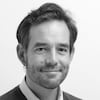Grass grows greener for Nadal
A slower-than-expected Centre Court suits the Spaniard’s purpose at Wimbledon

When Rafael Nadal headed off towards Centre Court to play Brazilian Thomaz Bellucci in his first-round match at Wimbledon on Tuesday, he did so down a luxurious staircase with glittering golden handrails. Before he had completed his 7-6, 6-2, 6-3 victory, an office next to those steps was spewing out figures that partly explained his success. According to what this newspaper was able to glean, the speed measurements carried out by the International Tennis Federation (ITF) on Centre Court are throwing out some “surprising” results.
The technicians say the court speed ratio is 38, signifying a medium-speed (category 3) court, when directors thought it would be between 40 and 45, a medium-to-high-speed court (category 4). After investing more than 100,000 euros each year in research, the executives have concluded that the ball is bouncing higher than before and isn’t traveling as fast as they thought it would. Perfect for Nadal, who clocked up his 50th win on grass.
“The court was much faster before,” summed up six-time Wimbledon champion Roger Federer, who beat Italy’s Fabio Fognini in straight sets in his second-round match on Wednesday. “At Roland Garros I spoke to [Austrian clay-court specialist] Thomas Muster and he told me that even he played serve and volley at Wimbledon. Anybody knows that he isn’t known for his volleys, but it was easier to try a volley than a passing shot. Look how things have changed! Is it because of the balls? Because of the court? Nobody knows. My impression is that the grass improves every year I come. Before it was much more difficult to play from the back, straight from the return, basing everything on the movement of your legs.”
According to a study carried out by the BBC in 2003, a Federer serve reached the returner at a speed of 84 km/h. In 2008, a similar shot traveled at 69.2 km/h and also bounced higher up, making it easier to return. What has happened?
Thomas Muster told me that even he played serve and volley at Wimbledon"
The ground that supports the grass is now more compact and hardens with each match, according to the tournament’s daily studies, which favors the bounce of the ball. The composition of the grass is also different, as is the height at which it is cut (eight millimeters), which lightly slows down the play. Finally, the pressure of the ball is two percent less than it was in 1995, which contributes to stopping it from gathering speed.
That is what the ITF technicians have certified, emphasizing that the biggest change is in the bounce, not the speed, after measuring three different Wimbledon courts with a Sestée, an instrument made up of two boxes that reconstructs the bounce of the ball with a laser.
Meanwhile, Nadal goes on breaking barriers. Only three other active players have won 50 matches on grass — Federer (106), Lleyton Hewitt (105) and Andy Roddick (83). “I have won three tournaments on grass [two Wimbledons and one at Queen’s] and played in three other finals,” he says. “Fantastic results, unimaginable 10 years ago. I’m happy to have changed the dynamic. Grass is now no longer a problem for the majority of Spaniards.”
Nadal is leading the charge and the others are not far behind. David Ferrer, who knocked out Germany’s Dustin Brown in straight sets in his first-round match, last week triumphed at the s’-Hertogenbosch grass-court tournament in the Netherlands.
Tu suscripción se está usando en otro dispositivo
¿Quieres añadir otro usuario a tu suscripción?
Si continúas leyendo en este dispositivo, no se podrá leer en el otro.
FlechaTu suscripción se está usando en otro dispositivo y solo puedes acceder a EL PAÍS desde un dispositivo a la vez.
Si quieres compartir tu cuenta, cambia tu suscripción a la modalidad Premium, así podrás añadir otro usuario. Cada uno accederá con su propia cuenta de email, lo que os permitirá personalizar vuestra experiencia en EL PAÍS.
¿Tienes una suscripción de empresa? Accede aquí para contratar más cuentas.
En el caso de no saber quién está usando tu cuenta, te recomendamos cambiar tu contraseña aquí.
Si decides continuar compartiendo tu cuenta, este mensaje se mostrará en tu dispositivo y en el de la otra persona que está usando tu cuenta de forma indefinida, afectando a tu experiencia de lectura. Puedes consultar aquí los términos y condiciones de la suscripción digital.









































